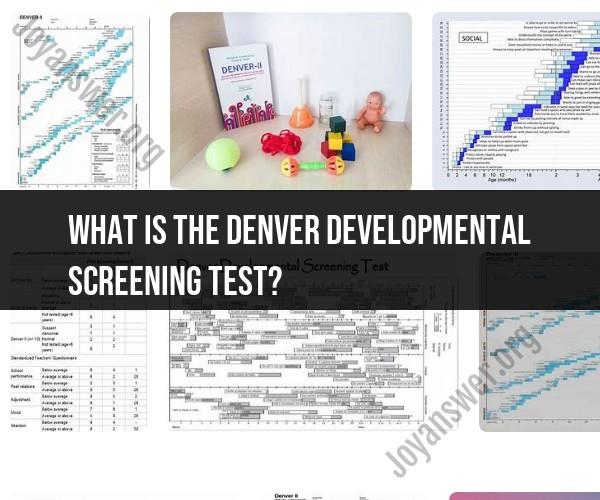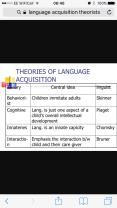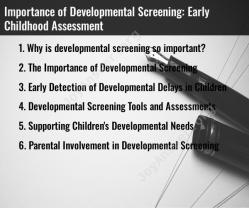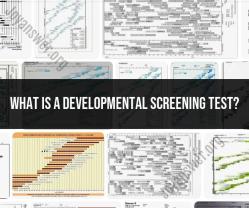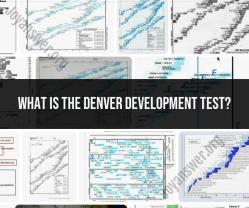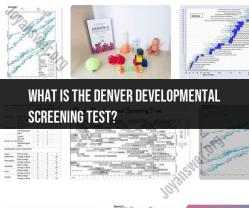What is the Denver developmental screening test?
The Denver Developmental Screening Test (DDST) is a standardized assessment tool used to screen for developmental delays in young children. It was originally developed in the 1960s and has since been revised into several versions, including the Denver II and the Denver Developmental Screening Test-3 (DDST-3). The DDST is commonly used in healthcare settings, such as pediatric offices and clinics, to identify potential developmental concerns in children.
Key features of the Denver Developmental Screening Test include:
Age Range: The DDST is typically administered to children aged 0 to 6 years. Different versions of the test may have specific age ranges or focus on different age groups.
Screening Purposes: The primary purpose of the DDST is to screen children for potential developmental delays or concerns in four main areas: personal-social, fine motor-adaptive, language, and gross motor skills.
Questionnaire and Observation: The DDST involves a combination of parent or caregiver questionnaires and direct observation of the child by a healthcare provider or trained personnel. Parents or caregivers provide information about their child's abilities, and the child's performance in various activities is observed.
Standardized Criteria: The DDST is based on standardized criteria that help identify whether a child's developmental skills are within an expected range for their age.
Scoring: The results are scored based on the child's performance in each developmental area. Deviations from the expected developmental milestones can trigger further evaluation or intervention.
Early Intervention: If a child's results on the DDST suggest potential developmental concerns, healthcare providers may recommend further assessments or early intervention services to address the specific areas of delay.
It's important to note that the DDST is a screening tool, not a diagnostic tool. If concerns are raised during the screening process, further evaluations, assessments, and interventions may be necessary to make a definitive diagnosis and develop a more comprehensive plan for addressing the child's developmental needs.
The DDST has been widely used for decades, but it's important to keep in mind that there are other developmental screening tools and methods available. Healthcare providers choose the most appropriate tool based on the child's age, specific needs, and the provider's clinical judgment. Parents and caregivers should work closely with healthcare professionals to ensure that their child receives appropriate developmental screening and support.
Denver Developmental Screening Test: An Overview of Early Childhood Assessment
The Denver Developmental Screening Test (DDST) is a widely used tool for assessing the developmental milestones of children from birth to age 6. It is a quick and easy test that can be administered by a variety of healthcare professionals, including pediatricians, nurses, and early childhood educators.
The DDST assesses four key developmental domains:
- Gross motor skills: These are the large movements of the body, such as rolling over, sitting up, and walking.
- Fine motor skills: These are the small movements of the hands and fingers, such as picking up small objects and drawing.
- Language skills: These include the ability to understand and use language, both verbally and non-verbally.
- Personal-social skills: These include the ability to interact with others and to perform activities of daily living, such as dressing and feeding oneself.
Understanding the Purpose and Components of the DDST
The DDST is used to identify children who may be at risk for developmental delays. It is also used to track the progress of children with known developmental delays.
The DDST consists of 125 items, which are arranged in four columns according to age. The items are presented to the child in a random order, and the child is scored as passing or failing each item.
The DDST is not a diagnostic tool. However, it can help to identify children who may need further evaluation by a developmental specialist.
Administering the Denver Developmental Screening Test
The DDST can be administered in a variety of settings, such as a pediatrician's office, a daycare center, or a home. The test typically takes about 15-30 minutes to complete.
To administer the DDST, the examiner presents the child with each item in the test booklet. The examiner observes the child's response and scores the item as passing or failing.
The examiner also asks the child's parents or caregivers a few questions about the child's development. This information is used to help interpret the DDST results.
Interpreting Results and Addressing Developmental Concerns
The DDST results are interpreted by comparing the child's performance to the developmental milestones for their age. If the child fails two or more items in any domain, the examiner may recommend further evaluation by a developmental specialist.
If the child is diagnosed with a developmental delay, the developmental specialist will work with the child and their family to develop a treatment plan. The treatment plan may include a variety of services, such as speech therapy, occupational therapy, or early intervention.
The Role of the DDST in Pediatric Healthcare
The DDST is an important tool for pediatric healthcare providers. It can help to identify children who may be at risk for developmental delays and to ensure that they receive the necessary support and services.
The DDST is also used to track the progress of children with known developmental delays. This information can be used to adjust the child's treatment plan and to ensure that they are making progress.
The DDST is a valuable tool for pediatric healthcare providers and for families with children with developmental delays. It can help to ensure that children receive the support and services they need to reach their full potential.
